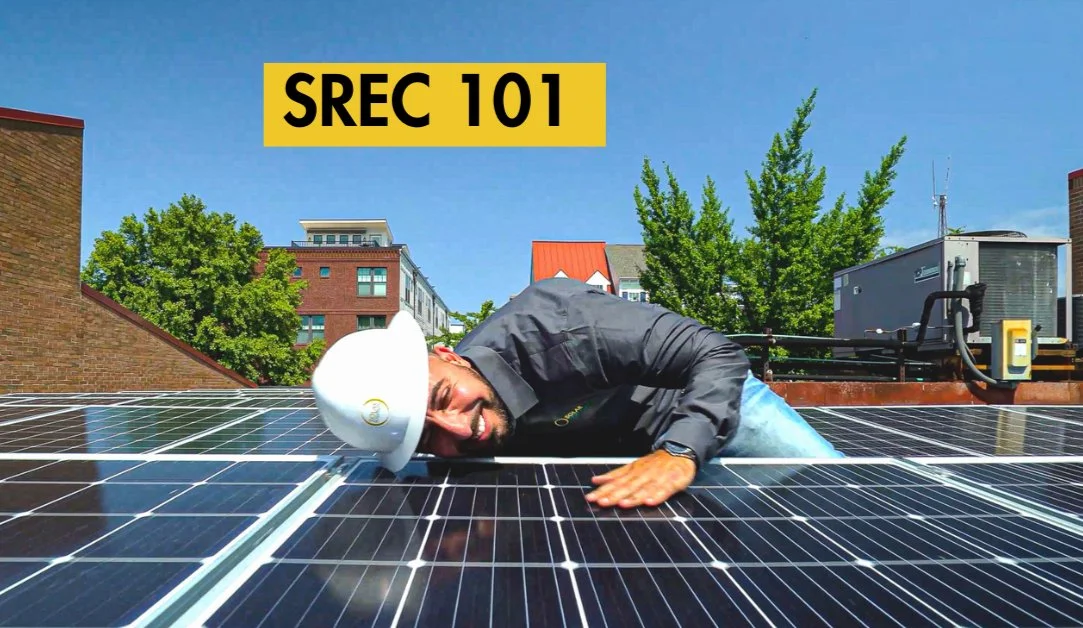Your Guide to DC SRECs
If you’re considering installing solar panels in Washington DC, you’ve probably heard of SRECs, or Solar Renewable Energy Credits. They’re an important aspect of the solar market - so if you’re thinking about getting solar panels, keep reading! In this blog post, we’ll break down some basic information about SRECs.
SREC Basics
When you install solar panels on your home, your system generates electricity, and in turn, SRECs. The number of SRECs you earn is directly correlated to the amount of energy your panels produce. 1,000 kWh (or 1 MWh) of electricity produced by a solar system equates to one SREC. For some context, the average residential system installed by Solar Solution produces about 10,000 KWhs, or 10 SRECs per year.
Each SREC represents a “green credit” that utilities need in order to hit their annual mandated renewable portfolio. Regardless if the electricity is immediately used in the home, or sent back to Pepco’s grid, the solar-generated electricity produced counts towards SRECs that can be sold to the utilities.
Solar Installation Options and SRECs
There are two common types of solar contracts: a Power Purchase Agreement (PPA) or a Full Purchase Agreement.
If you’re receiving solar panels through a PPA or other leasing agreement, then you don’t own your solar panels or the SRECs it produces.
If you buy your solar system outright through a full purchase agreement, then you’ll own the SRECs generated by your system.
How do I sell my SRECs?
To begin trading your SRECs, the easiest way to do it is through a brokerage. SREC brokers will monitor your systems output and trade your SRECs on your behalf, while taking a small fee. A few of the brokers that DC residents can reach out to include SAMS, SRECTrade, and Sol Systems. The Solar Solution team can offer application assistance to help you get started.
How do SREC brokers work?
When using a company to broker your SRECs, they offer two trading options: market rate or a futures contract.
When you sell SRECs on the open market, each SREC will be sold at the going market rate.
The second option is to enter into a futures contract. This is a fixed year term agreement at a locked-in SREC price, usually for about 3-5 years. These locked-in agreement rates can be substantially lower than the current SREC price. However, for losing some profit, you’re able to protect yourself from any future rate fluctuations in the SREC market.
It is important to note that with either options, selling your SREC’s with any broker will incur a brokerage fee, usually around 5-10%.
Who is buying SRECs?
SRECs are valuable because utility companies are required to meet sustainability requirements set by each state’s Renewable Portfolio Standard (RPS). In order to meet these requirements, they purchase SRECs.
Other parties who purchase SRECs include brokers, environmental firms, or companies looking to neutralize their carbon footprint.
How is the price of an SREC determined?
In 2004, DC introduced legislation that established a Renewable Portfolio Standard (RPS). This law requires utilities to ensure that a designated amount of electricity comes from solar and other renewable energy sources. In order to comply with this law, utilities can either produce that clean electricity, or purchase these "green credits" through buying homeowners and businesses' SRECs.
While RPS has been updated several times since 2004, (ready the current version here), the overall trend is increasing the amount of required solar energy. Under the current RPS, the required solar energy offset in 2024 is set at 3.65%. By 2041,15% of all electricity generated in Washington, D.C. must come from solar energy.
To incentivize utilities to meet these goals, D.C. instituted a fine, the Solar Alternative Compliance Penalty (SACP), if utilities do not meet the RPS. While the Solar Alternative Compliance Penalty (SACP) set to $480 for every 1,000kWh under the RPS, the fine will decrease incrementally each year until it drops to $300 in 2029. It will remain at $300 until through 2041, and then in 2042 it will drop to $100.
Year vs Solar Alternative Compliance Penalty
2024 - $480
2025 - $460
2026 - $440
2027 - $420
2028 - $400
2029 - $380
2030 - $360
2031 - $340
2032 - $320
2033-2041 - $300
2042 - $100
As determined by the Local Solar Expansion Amendment Act of 2022, the current SACP determines the cap on the trading value of an SREC.
Combine the undersupply due to the District's restrictive infrastructure, and growing demand set by the RPS, SRECs market in DC is relatively stable. However, with any investment there is risk.
DC SRECs vs. Maryland SRECs
Maryland has its own separate Renewable Portfolio Standard and SREC pricing. If you live in Maryland, you are still entitled to SRECs and the same exact process applies regarding selling your SREC’s. It is important to note that as of August 2024, the value of one SREC in Maryland is currently trading at $53.00.
If you live directly across the DC/MD Border and your home is connected to the DC grid, it’s possible that you may be eligible for DC SRECs. Check out this map for a better understanding of how far the DC grid reaches into Maryland. Give a call to Solar Solution to speak with a professional to better understand your options.

